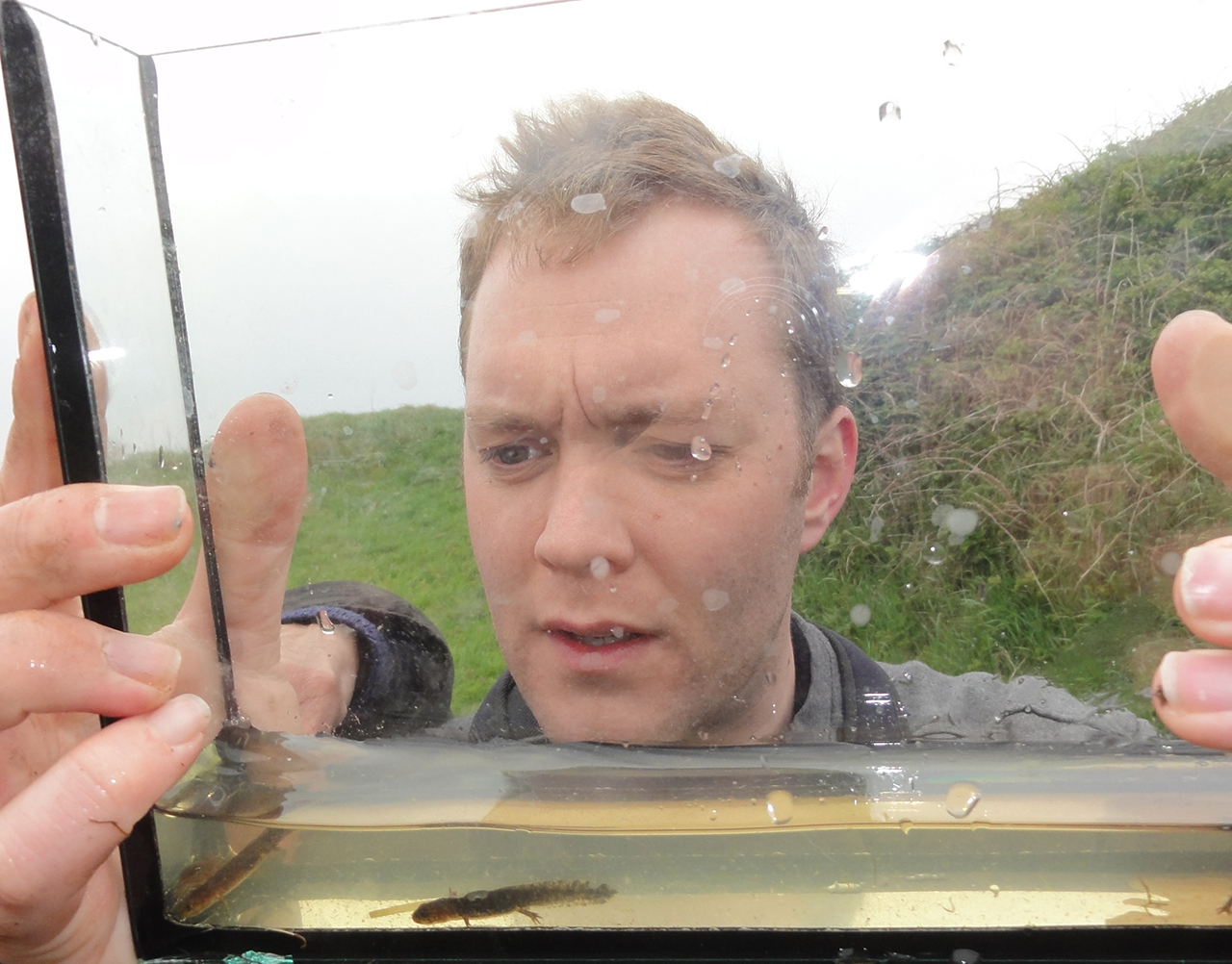
Untangling the Evolution of a Balanced Lethal System
Ben Wielstra strives to unravel the evolution of balanced lethal systems. On 1 February he started his own lab at the Institute of Biology Leiden. Wielstra is one of five researchers at Leiden University who has been awarded an ERC Starting Grant in 2018 by the European Research Council. ERC Starting Grants are awarded to early career scientists showing great promise. Wielstra received an amount of 1.5 million euros.
Balanced lethal system
In a balanced lethal system, two forms of a chromosome occur which both are required for survival. Yet, parents randomly pass on one of the two forms to the next generation. This way, some of the offspring will receive two copies of the same form of chromosome The chance of this is 50% (see picture). These offspring are therefore not viable. This system appears to defy evolutionary theory: you would expect that a system with such an incredibly high mortality rate would quickly be eliminated by evolution.
Evolutionairy trap
‘I think these systems are a kind of evolutionary trap in which you can end up if something that has a short-term advantage, turns out to be disadvantageous on the long term’, Wielstra says. For example, it could be that having both chromosome forms initially results in an advantage (favourable properties) for an individual. But, that both chromosome forms become interdependent if later, after a number of generations, fatal mistakes occur in both of them. ‘An individual then is therefore only viable if such a deadly mutation in chromosome form A is compensated by the normal gene on chromosome form B. Individuals with two copies of the same chromosome form are doomed.’

Rare?
Balanced lethal systems are known in plants, insects and also vertebrates. But there are still only a few examples in total. ‘I think many of them are currently overlooked’, Wielstra says. He works on the best-known example: the Triturus salamanders. ‘I think that these systems occur more often than people realise. If 50% of all embryos die, you can miss it because you simply can't see it'. This probably goes unnoticed in species that produce a lot of offspring. If a species only produces one child at a time and half of the times things go wrong, then it will be noticed sooner. For this reason, Wielstra suspects that these systems do not occur in humans.
Searching in genes
All we currently know about balanced lethal systems derives from classical studies that did not look deeper than embryos and cells. Theory and technology have considerably advanced since. Ben Wielstra and his research team will combine cutting-edge genetic techniques and evolutionary modeling to investigate how these bizarre balanced lethal systems can evolve. ‘By comparing the genes of ‘doomed’ embryos with individuals who survive, we can determine what is missing in the first group. This results in a set of genes that may be the critical factor. By also looking at which genes are active at the crucial moment when half of the embryos die, we can get an even better picture of which gene or genes make the difference.’

Ben Wielstra studied Biology at the Institute of Biology Leiden (IBL) with several projects at Naturalis Biodiversity Center. He did his PhD at the University of Twente, with a strong link to Naturalis in Leiden. He continued to be associated with Naturalis, and collaborate with Pim Arntzen, but after a Newton International Fellowship at the University of Sheffield and a Marie Skłodowska-Curie Fellowship at the University of California, Los Angeles, he now returns to Leiden on his ERC-grant at a tenure track position at the IBL. Besides the solid link with Pim Arntzen and many others at Naturalis, Wielstra joins other IBL-staff with an evolutionary expertise and interest such as Klaas Vrieling, Mike Richardson, Maurijn van der Zee and Daniel Rozen.
